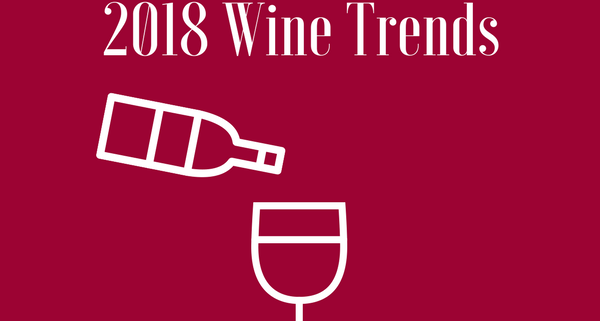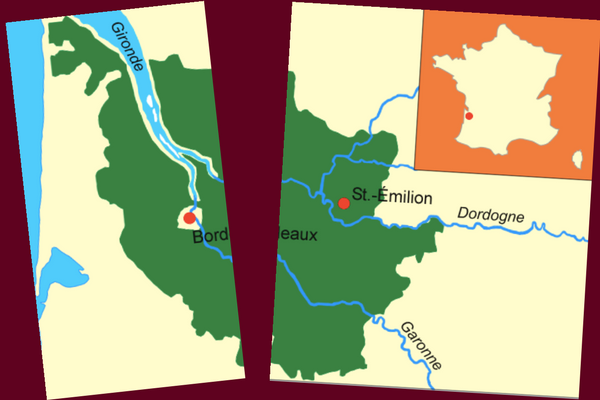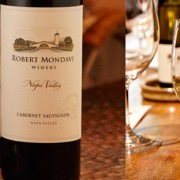State of the Bar: 2018 Wine Trends
Like all of us, 2017 was a complicated year for wine. Drought and the tragic wild fires that burned through northern California and its vineyards left a raw edge on an other wise successful year for the wine segment. Shaken, but not defeated, what is on the horizon for 2018 wine trends? Let’s take a look at which trends will open up, breath, and come to maturity in 2018.
Premium Wine Time
Premium seems to be the buzzword surrounding a lot of beverage trends taking hold. We mentioned premium cocktails in our State of the Bar: 2018 Cocktail Trends guide. And wine drinkers are also looking to spend more on high end bottles than in years past.
Beverage Dynamics wrote about the “premuimization” trend that wine retailers are seeing in their stores.
On the pricing front, consumers are continuing to trade up in 2017. While more than 80% of wine category volume still occurs below $10 at retail, national data shows that consumers are increasingly seeking more premium offerings, and the most significant growth in the first two quarters of this years is occurring above $10 a bottle.
“Buying up” is often an easier sell at restaurants than wine sellers, where drinkers are looking more for an exciting and elevated experience than simply purchasing a bottle to unwind with after work.
Premium Rosé
The growth of rosé is beginning to wan. Which isn’t a necessarily a surprise, given that the explosive rise of the pink stuff couldn’t be sustained for ever. But rosé from the Provence region of France continues to build as drinkers seek out different styles of the wine. Provençal rosé is light and crisp, without the soft fruits found in many of its American counterparts. Wine Spectator notes that this rosé style is especially popular in restaurants and sales numbers show that Provençal rosé recently hit a milestone, reaching 1.3 million cases for distribution to the U.S. Whispering Angel is the brand leading the trend in U.S. wine bars and restaurants.
Bordeaux Breakdown
The imperial purple shade of Bordeaux red wine isn’t the only reason the stately region has a reputation for producing fine wines fit for the highest class. The region’s wines have a quality and depth that puts Bordeaux blends in a class of their own. But the individual grapes that can be used in Bordeaux reds are also worthy of reputation. Some of these grape varietals are making noise of their own, and taking up listing on wine menus.
Carménère is Growing
Carménère has taken on a new life in Chile. Originally grown in Bordeaux, this grape was traditionally used as blending grape in red wines. The pleasures of South American wines were brought to U.S. drinkers through Argentinian Malbec. And now South American wines are growing in quality, yield, and consumption. Carménère has also grown to become more appreciated as its own distinct varietal. Spicy and rich, it’s becoming more popular on restaurant wine lists and in wine retail.
Cabernet Franc Finds a New Home
A grape regularly used in Bordeaux reds, Cab Franc also has legions of fans that favor Loire Valley wines from the north center of France. But Cabernet Franc is taking root in another prominent wine region, California. And California wine makers have put their own spin on Cab Franc, with wines that boast flavors of big, ripe fruit. Punch Drink notes that Cab Franc is primed to grow in popularity, particularly as wine drinkers honor California and the wine regions that were devastated by wild fires.
Wine Goes Indie
As upstart wineries look to carve out space in a competitive market, price and image are two ways to stand out. They also signify to buyers that these wines aren’t the stuffy bottles of white table cloth restaurants or pent house dinner parties.
In an interview with the San Francisco Chronicle, Atlas Wine Company partner Alexandre Remy said, “I want to be the Lagunitas of wine,” referring to Lagunitas Brewing Company, one of craft beers leading brands. Remy and his partners idea is to create great wines at affordable prices that appeal to younger buyers. Atlas Wine will attempt to follow the path blazed by nomadic wine producers like Prisoner Wine Co., which sold to Constellation Brands for $285 million in mid-2016.
In the above section we mentioned that premium wines are growing, and they are. But the wine segment is so large, it often contains viable trends that seem to contradict one another. Wine drinkers will be open to more premium purchases, but many will often look for value and stories behind the brands. There’s no reason these two trends can’t co-exist.
Wine Labels Get Crafty
Wineries are always on the hunt for new ways to stand out. Especially in retail sales where wine shelves act as menus. One way to attract attention is with creative and eye-catch labels. This has long been a prominent feature of craft beer, where label art takes a fever dream, punk-art approach.
Take a look at Chronic Cellars wine selection and see how wineries use label art to set themselves apart.
Red Blends Grow On
The red blend market is wide open. Often credited to an emphasis on catering to millennials, the popularity of red blends continues to build beyond that golden calf demographic.
2016 saw 10% growth in red blend sales from 2015. And that wine trend doesn’t seem to be slowing, only picking up steam.
One of the reasons this category is set up for continued growth is how open and freewheeling a category it is. Red blends offer a perfect palette for wine makers to mix grapes, blending, and mimic other styles.
This is the Wine Installment of Uncorkd’s State of the Bar: 2018 Beverage Trends series. Read our 2018 Cocktail Trends and our 2018 Beer Trends predictions.
- 5 Fall Cocktails to Capture the Flavors of Autumn - September 26, 2018
- How Restaurants Can Ignore Sales and Increase Profits - May 9, 2018
- 2018 Spring Wine Trends - April 18, 2018











